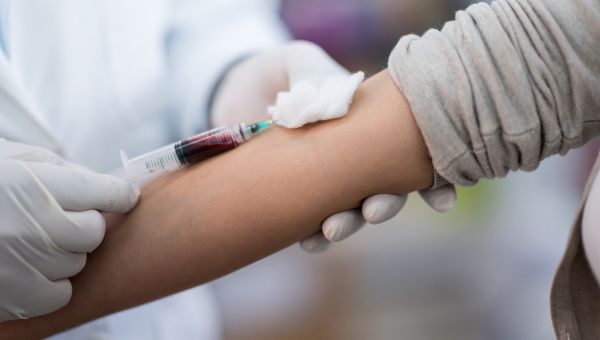Why Aren’t More People Treated for Prediabetes?

What if one in three American adults had a condition that put them at higher-than-normal risk of developing diabetes? What if the vast majority of them were unaware that they were sitting on this ticking time bomb? And what if their doctors knew they had this condition, but didn’t tell them or didn’t provide treatment—or just plain missed the diagnosis?
Those are a lot of ifs—but they form the basis of questions that a team of researchers from the University of Florida asked themselves when they started thinking about the number of Americans living with prediabetes. According to the Centers for Disease Control and Prevention (CDC), 86 million have prediabetes and nine in 10 don’t know it. Another team of researchers, writing in JAMA Internal Medicine in October 2016, estimate that about 58.7 percent of people over 40 were at high risk of prediabetes. For those over 60, it jumps to 80.8 percent.
Why is that, and what role do doctors play? In search of answers, the University of Florida researchers, whose findings were published in the Journal of the American Board of Family Medicine in March 2016, analyzed data from a 2012 government survey of random doctors. Specifically, they looked at patients age 45 and up who’d had an A1C blood test, used to measure average blood sugar, within 90 days of their doctor visit. The scientists found that 34 percent had blood sugar levels in the prediabetes range. Of these, only 23 percent were in treatment, either via medication or lifestyle changes.
The question remains: Why did three out of four people with prediabetes not receive treatment? We went to endocrinologist Jack Merendino, MD, a Sharecare Advisory Board Member, best-selling author and Assistant Clinical Professor at the George Washington University School of Medicine and Chief of the Endocrine Section at Suburban Hospital, Johns Hopkins Medicine, for his take.
Breaking bad habits
Dr. Merendino believes that more people aren’t treated for prediabetes because many doctors don’t see the condition as an immediate cause for concern. “Doctors tend to look at treatment as medication. There’s a lot of evidence that doctors are not good at recommending lifestyle changes,” he says. “In the physician’s mind, what’s going on is that there’s an impending problem, but it’s not yet bad enough to need medication.”
One reason doctors don’t often recommend lifestyle modification—such as eating a healthy dietand exercising regularly—is the perception that patients don’t follow doctors’ orders. Even so, Merendino thinks doctors often underestimate the influence they have with their patients. “A fair number of patients do make changes when recommended by doctors,” he says. Though not every patient will be able to modify their diet and exercise habits, Merendino says enough will make the changes for the recommendations to be valuable.
Perceived lack of urgency
Another reason for the low numbers of diagnoses, Merendino says, is that some doctors don’t see prediabetes as urgent. Controlling diabetes often means getting getting A1C levels down to under seven percent, which is still above the level considered prediabetes. “Physicians are saying it’s not as much of a big deal, rather than thinking that if the patient is prediabetic then they might develop diabetes.” And, progressing from prediabetes to diabetes usually takes years, according to Merendino. “It’s an issue, but an issue for the future,” he says.
Still, a diagnosis of prediabetes should be taken seriously. “Prediabetes is not a benign condition,” Merendino says. For example, many people already have neuropathy, or nerve damage, when they’re diagnosed with diabetes. That means at least some people have picked up neuropathy while they were in the prediabetes stage, he explains. “It’s not like you’re fine with prediabetes and then you get complications when you reach diabetes levels.”
Should you be tested?
Prediabetes usually has no obvious symptoms, which is why it’s important to be proactive. If you’re 45 or older (the age when risk increases), consider being tested for diabetes, especially if you’re overweight or obese. You should also consider being tested if you’re under 45, overweight or obese and have additional risk factors such as family history of diabetes, physical inactivity, high blood pressure, low HDL cholesterol or polycystic ovary syndrome.
Reversing prediabetes
Having prediabetes doesn’t necessarily mean you’ll get diabetes. Between 15 percent and 30 percent of people will eventually develop the condition within five years of a prediabetes diagnosis, but the longer you have elevated blood sugar, the more likely it becomes, Merendino says. “Patients should be asking, how do I prevent myself from progressing to diabetes?” Merendino says. “Doctors’ recommendations should be lifestyle modifications: weight loss and physical activity.” In fact, according to the CDC, eating smart and being active can cut the risk of type 2 diabetes in half if you have prediabetes.
The Diabetes Prevention Program, a major study that followed more than 3,200 people in 27 clinical centers for about three years, showed that lifestyle changes were about twice as effective as medication at preventing the development of diabetes. People in the study, which was published in the New England Journal of Medicine in 2002, saw success even at modest levels of weight loss. Exercise does double-duty: Not only does it help to keep the weight off, but it also helps the body use insulin more efficiently.
“[For exercise] to do twice as good as drugs—that was really major,” says Merendino. “If there’s a failure here, it’s a failure on the part of physicians to internalize the powerful effect that lifestyle intervention can have.”
Sourcing: UpToDate, National Institutes of Health, American Diabetes Association, CDC


